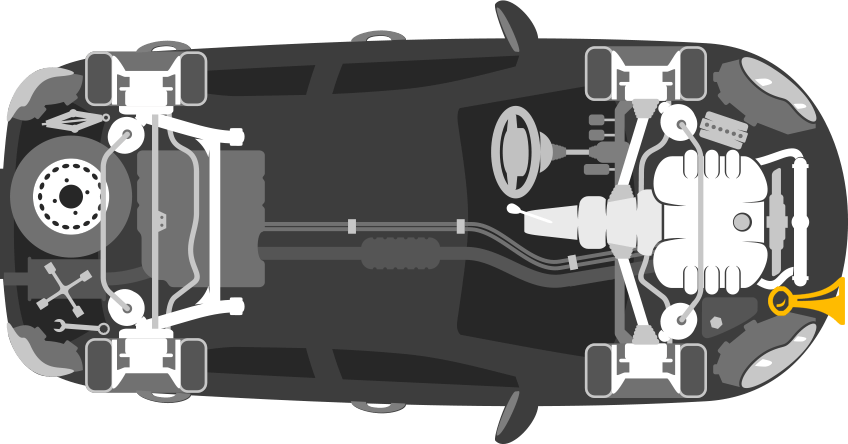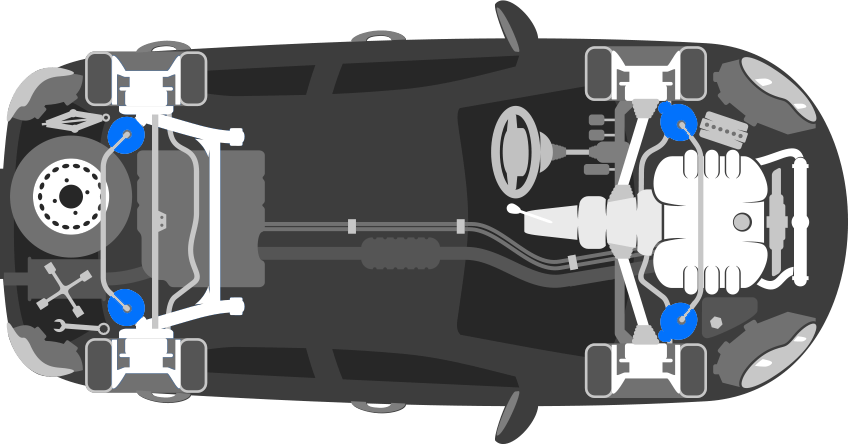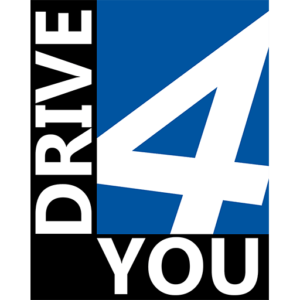DEN PRAKTISKE PRØVE
BENYT MENU ELLER SCROLL DOWN
☰ MENU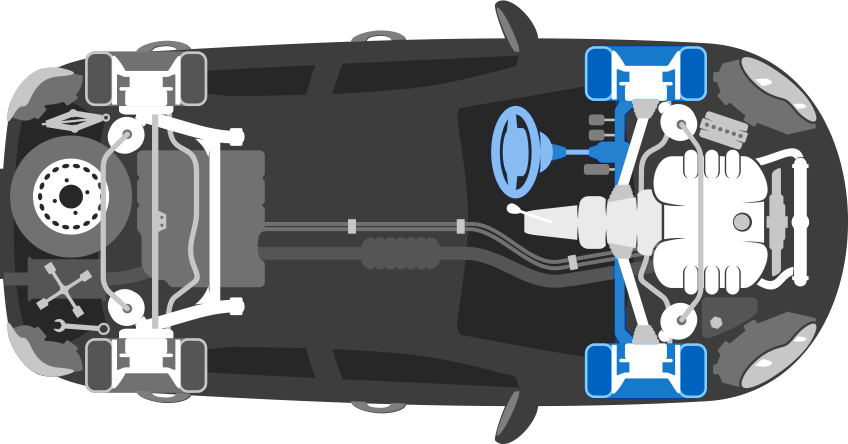
Du skal kunne kontrollere, om følgende forhold ved styreapparatet er opfyldt:
Der må normalt ikke være ratslør. Dette betyder at hjulene straks skal følge rattets bevægelse. I biler med servostyring foretages kontrollen med startet motor. Langt de fleste biler HAR servostyring. Ryk lidt fra side til side i rattet, og se om hjulene følger rattets bevægelser.
Væskestanden i en eventuel servobeholder skal følge bilfabrikantens forskrifter. Dette kontrolleres enten ved, at væskestanden er mellem min. – og max. -mærket, eller ved at kontrollampen herfor ikke er tændt. Servobeholderen sidder i motorrummet.
Videoen er med engelske undertekster.
Derudover skal du vide følgende om styretøjet, men det indgår ikke i den praktiske køreprøve:
- Styreapparatet skal være således indrettet, at bilen kan styres let, sikkert og hurtigt.
- Der må ikke på grund af slid eller lignende forekomme væsentligt slør i styreapparatet som helhed eller i dets enkelte dele.
- Ved kørsel med lav hastighed skal rattet let kunne drejes fra side til side uden at møde ujævn modstand eller fremkalde mislyde.
- Tung eller vanskelig styring kan skyldes manglende væske på servobeholderen, slidt eller knækket drivrem til servostyringen eller fejl i det elektriske servostyringssystem.
- Såfremt hjulene ikke straks følger rattets bevægelser, kan det være tegn på slør i styreforbindelser.
- Styreapparatet skal efterses, hvis der er for lidt væske i servosystemet, eller hvis der er væsentligt ratslør.
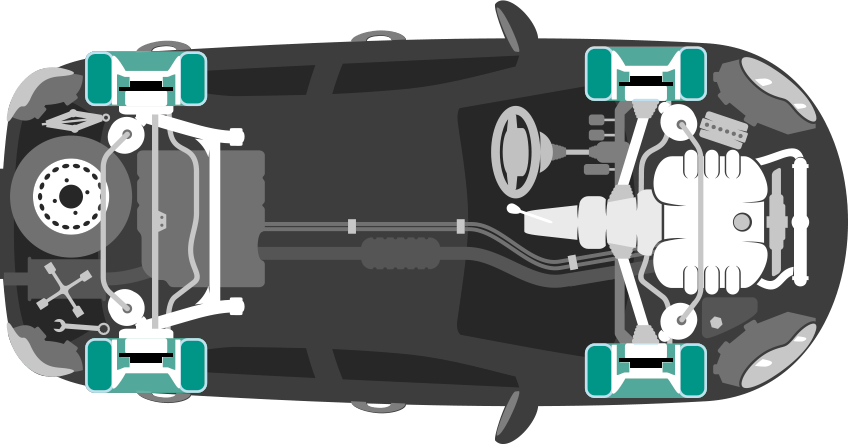
Du skal kunne kontrollere, om følgende forhold ved bremsen er opfyldt:
Bremsepedalen må ikke kunne trædes i bund, når der trædes hårdt på pedalen, men hvor langt den går ned før den bliver hård og fast, er afhængigt af bilfabrikatet.
Bremsepedalen må normalt ikke synke, mens den holdes nedtrådt ved konstant tryk.
Mange biler har vakuumforstærker/bremseforstærker. Den kontrolleres ved at træde og slippe bremsepedalen nogle gange. Herefter startes motoren mens du holder bremsepedalen nedtrådt og så skal pedalen synke et lille stykke.
Der må ikke mangle væske i bremsevæskebeholderen. Det kontrolleres ved at niveauet er mellem min. – og max. -mærket, eller ved at kontrollampen ikke er tændt.
Videoen er med engelske undertekster.
Derudover skal du vide følgende om bremsesystemet, men det indgår ikke i den praktiske køreprøve:
- Driftsbremsen skal virke på alle hjul og kunne bremse bilen sikkert, hurtigt og virksomt ved alle hastigheder og belastninger.
- Parkeringsbremsen skal kunne holde bilen standset på hældende vej.
- Skævtrækning af bilen under let opbremsning på vandret vej tyder på fejl i bremsesystemet eller på fugt eller snavs på bremsebelægningerne. Fugt kan godt trænge ind i bremserne under fx bilvask, men forsvinder efter en kortvarig bremsning.
- Ujævn bremsning eller pludselige hugninger fra et eller flere hjul tyder på fejl i bremsetromler, bremseskiver eller bremsebelægninger.
- Hvis bremsepedalen pludselig kan trædes længere ned end sædvanligt, er det tegn på, at den ene bremsekreds er defekt.
- Skævtrækning af bilen under let opbremsning på vandret vej er tegn på fejl.
- Ujævn bremsning eller pludselige hugninger fra et eller flere hjul er tegn på fejl.
- Bremser skal umiddelbart efterses, hvis der er for lidt bremsevæske i bremsevæskebeholderen, hvis kontrollampen lyser under kørsel, hvis bremsepedalen kan trædes længere ned end normalt, eller hvis bremsningen er ujævn, eller bilen under bremsningen trækker til siden.
- Hvis kontrollampen for ABS-bremsesystemet ikke slukkes kort efter igangsætning, er det tegn på fejl i ABS-bremsesystemet, og kun kørsel til nærmeste værksted er tilladt.
- ESC-systemet er forsynet med en kontrollampe. Hvis denne lyser konstant, kan der være fejl i ESC-systemet, og bilfabrikantens anvisninger skal følges.
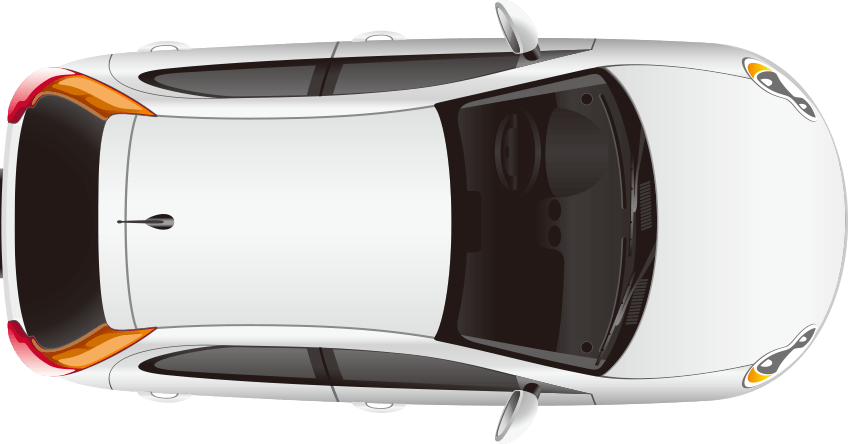
Du skal kunne kontrollere, om følgende krav til påbudte lygter og reflekser er opfyldt:
Alle lygter og reflekser skal være hele og rene, og alle lygter skal kunne lyse.
Nærlyset må ikke blænde (bedømt på, at overkanten af lysgrænsen falder 1 cm pr. m). Stil dig foran bilen med nærlyset tændt, sæt en finger der hvor lyskeglen rammer dit ben. Derefter træder du 1 meter tilbage og så skal lyskeglen ramme dit ben 1 cm længere nede.
Stoplygterne skal give væsentligt kraftigere lys end baglygterne. Få en anden til at træde bremsepedalen, mens du tjekker lygterne.
Blinklygterne skal blinke med gult lys, der tydeligt kan ses i sollys.
Havariblinket (katastrofeblinket) skal kunne tænde alle blinklygter samtidig.
Nummerpladelygter skal have hvidt lys, der kan belyse den bageste nummerplade.
Lygter i et lygtepar skal have ens farve og lysstyrke.
Videoen er med engelske undertekster.
Derudover skal du vide følgende om lygter og reflekser, men det indgår ikke i den praktiske køreprøve:
- Bilen må kun være udstyret med påbudte eller tilladte lygter og reflekser.
- De påbudte lygter og reflekser omfatter:
- to lygter med fjernlys,
to lygter med asymmetrisk nærlys,
to lygter med positionslys,
to lygter med baglys,
tre lygter med stoplys (ældre biler kan nøjes med to stoplygter),
mindst én nummerpladelygte,
to blinklygter foran og bag på bilen samt én på hver side af bilen og
to røde godkendte og mærkede bagudvendende reflekser (må ikke være trekantede).
Forlygternes fjernlys (det lange lys) skal kunne oplyse vejen mindst 100 m foran bilen, nærlyset skal kunne oplyse vejen mindst 30 m foran bilen uden at blænde, og positionslyset skal tydeligt kunne ses på mindst 300 m’s afstand uden at blænde. - Alle lygter og reflekser skal være hele, rene og ubeskadigede.
- Forlygternes lys skal være hvidt eller gulligt.
- Pærer skal være korrekt monteret.
- Baglygternes lys skal være rødt.
- Biler, der er længere end 6 m, skal være forsynet med godkendte og mærkede gule sidereflekser og sidemarkeringslygter, der skal være fordelt på bilens sider.
- Hvis blinklygterne blinker væsentligt hurtigere end sædvanligt, er det normalt tegn på, at en eller flere blinklygter ikke virker.
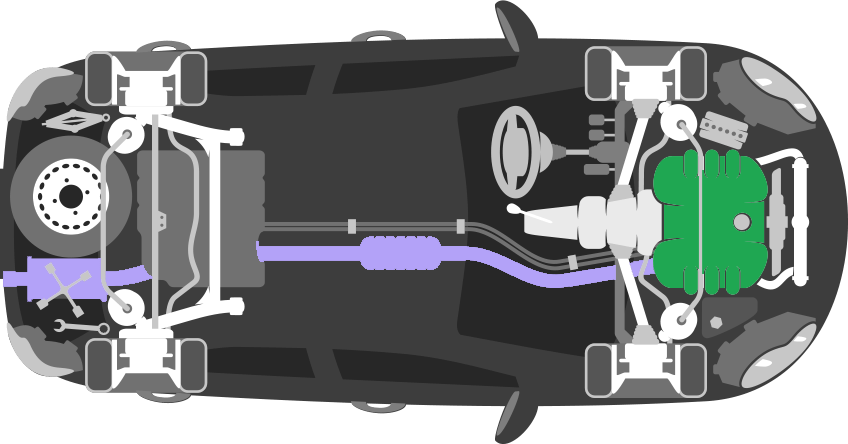
Du skal kunne kontrollere, om følgende krav til motor og udstødningssystem er opfyldt:
Motoren må ikke udvikle unødig røg og støj. Start motoren og kontrollér det.
Udstødningssystemet skal være tæt og sidde fast. Hvis der er meget støj, tyder det på utæt udstødningssystem. Se under bilen om udstødningssystemet sidder fast.
Motorolie skal være påfyldt i tilstrækkelig mængde, aflæst på oliepindens max. – og min. –mærker, aflæst på bilen instrumenter eller efter instruktionsbogens anvisninger.
Kølervæske skal være påfyldt i tilstrækkelig mængde bedømt efter instruktionsbogens anvisninger. Oftest er der et min/max mærke på beholderen i motorrummet.
Ude i motorrummet finder du desuden beholderen til sprinklervæske. Der skal være nok til næste køretur. Det ser du enten direkte på beholderen, eller også er der en advarsel i instrumentpanelet, hvis beholderen er ved at løbe tør.
Videoen er med engelske undertekster.
Derudover skal du vide følgende om motor og udstødningssystemet, men det indgår ikke i den praktiske køreprøve:
• Utætheder i udstødningssystemet eller kørsel med åben bagklap kan medføre, at kulilte, som er lugtfri og farlig selv i små mængder, trænger ind i bilen.
• For lidt olie på motoren eller for lidt vand i kølesystemet kan medføre, at motoren beskadiges.
• Sort udstødningsrøg tyder på dårlig forbrænding og er tegn på fejl.
• Støj i unormalt omfang ved gasgivning tyder på fejl i udstødningssystemet.
• Motoropspeedning, uden at hastigheden under kørslen forøges, tyder på fejl i kobling.
• Vanskelig gearskiftning med kraftige mislyde tyder på fejl i gear eller kobling.
• Langsom bevægelse af bilen i 1. gear, selv om koblingspedalen er trådt i bund, tyder på fejl i koblingen.
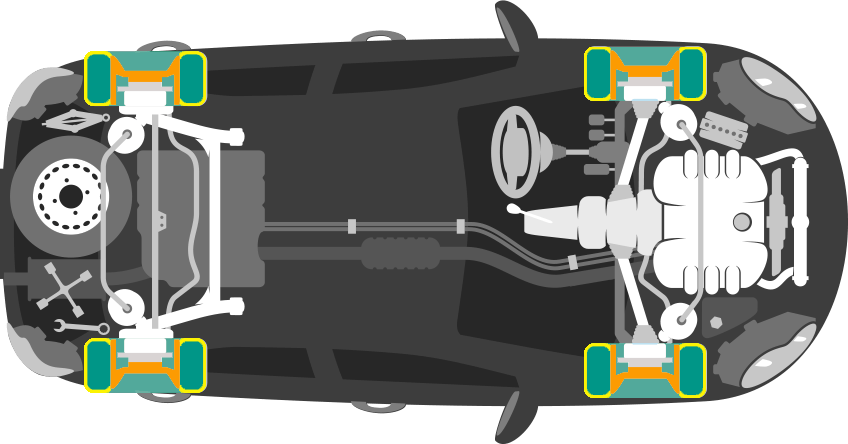
Du skal kunne kontrollere, om følgende krav til dæk og fælge er opfyldt:
Dæk skal have mindst 1,6 mm dybde i hovedmønstret på alle hjul. Det bedømmer du nemmest på slidindikatorerne.
Dæk og fælge skal være ubeskadigede.
Videoen er med engelske undertekster.
Derudover skal du vide følgende om dæk og fælge, men det indgår ikke i den praktiske køreprøve:
Personbil med tilladt totalvægt på højst 3.500 kg og varebil med tilladt totalvægt på højst 3.000 kg skal være forsynet med dæk af samme type på alle hjul, bortset fra nødreservehjul.
Dæk opdeles i typer afhængigt af:
a) opbygning:
i) radialdæk
ii) diagonaldæk.
b) anvendelseskategori:
i) almindeligt dæk (uden »M+S«-mærkning)
ii) terræn- og vinterdæk (med »M+S«-mærkning)
iii) dæk til midlertidigt brug (nødreservehjul).
Dækkets oppumpningstryk skal være i overensstemmelse med det af køretøjsfabrikanten foreskrevne.
Ujævnt/skævt slid på dæk tyder på fejl.
Unormal tendens til over- eller understyring af bilen – dvs. at bilen drejer i en skarpere hhv. blødere bue, end hvad der skulle svare til ratdrejningen – eller øget følsomhed for sidevind tyder på forkert dæktryk.
Knirkende lyde under kørslen kan tyde på fejl i hjulophæng, herunder fjedre eller støddæmpere.
Ujævnt/skævt slid på dæk tyder på fejl i dæktryk, hjul eller hjulindstilling, bremser eller støddæmpere.
Unormal støj eller rystelser fra hjulleje eller hjulophæng kan være tegn på fejl.
Ujævnt/skævt slid på dæk kan være tegn på forskellige fejl ved køretøjet. Disse fejl skal umiddelbart afhjælpes.
Forkert dæktryk kan vise sig ved ujævnt/skævt slid på dæk, skævtrækning under let opbremsning eller unormal over- og understyring og skal umiddelbart afhjælpes.
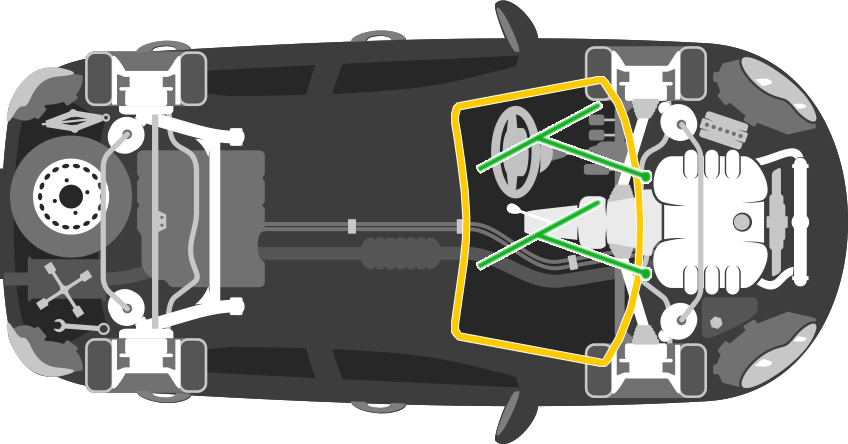
Du skal kunne kontrollere følgende særligt udstyr:
Sprinklervæske skal være påfyldt i tilstrækkelig mængde. En tilstrækkelig mængde, betyder at der er nok til den køretur du har påtænkt, så du til enhver tid har mulighed for at rense din rude. Dette kontrolleres enten ude i motorrummet direkte på beholderen, eller også på kontrollampe inde i bilen.
Viskerne skal kunne holde forruden ren. Det kan du kontrollere ved at sprøjte sprinklervæske på ruden og dette aktiverer automatisk viskeren. Nu skal viskeren så viske ruden ren, uden at der er nævneværdigt slør eller striber på ruden.
Videoen er med engelske undertekster.
Du skal vide følgende om særligt udstyr, men det indgår ikke i den praktiske køreprøve:
- Bilen skal normalt være forsynet med sikkerhedsseler på alle siddepladser.
- Sikkerhedsselerne skal være uden beskadigelser.
- Bilens påbudte nakkestøtter må ikke fjernes, hvis siddepladsen benyttes. Forruden skal kunne holdes ren med viskere og vasker. Forruden skal som hovedregel være hel og uden beskadigelser.
- Bilen skal være forsynet med et indvendigt førerspejl og et udvendigt førerspejl i venstre side. Såfremt der ikke er tilstrækkeligt udsyn bagud, skal der desuden være udvendigt førerspejl i højre side.
- Spejlene skal være rene og ubeskadigede.
- Under kørsel bør man medbringe en godkendt advarselstrekant, så man har den ved hånden i situationer, hvor man har pligt til at sætte den op. (Se afsnit 6.2.8 i din teoribog til almindelig bil).
- Kan forruden ikke holdes ren, er det tegn på fejl i visker eller vasker.
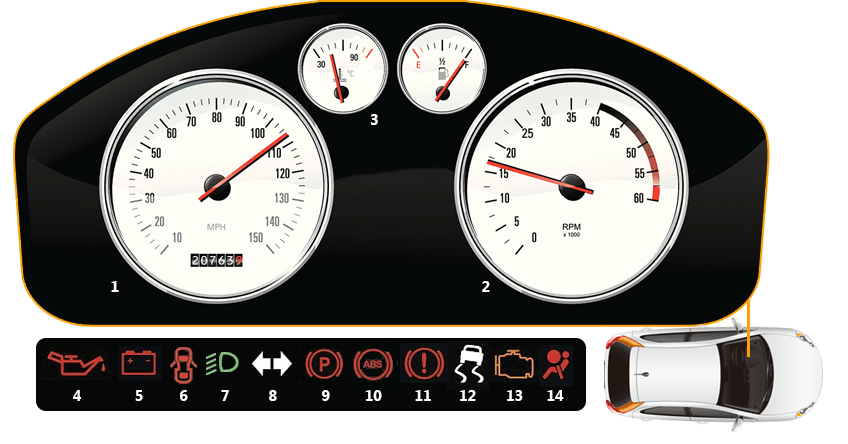
Du skal kunne aflæse og forstå betydningen af følgende instrumenter og kontrollys:
Du skal kunne aflæse og forstå betydningen af følgende instrumenter og kontrollys:
(1) Speedometer, (2) evt. omdrejningstæller og (3) temperaturmåler.
(4) Kontrol for olietryk, (5) elektrisk strøm, (6) dørlukning, (7) lys i lygter, (8) herunder blinklys, (9) parkeringsbremse, (10) ABS-bremser, (11) fejl i bremsesystemet, (12) ESC, (13) motorlampe og (14) kontrollys for airbags.
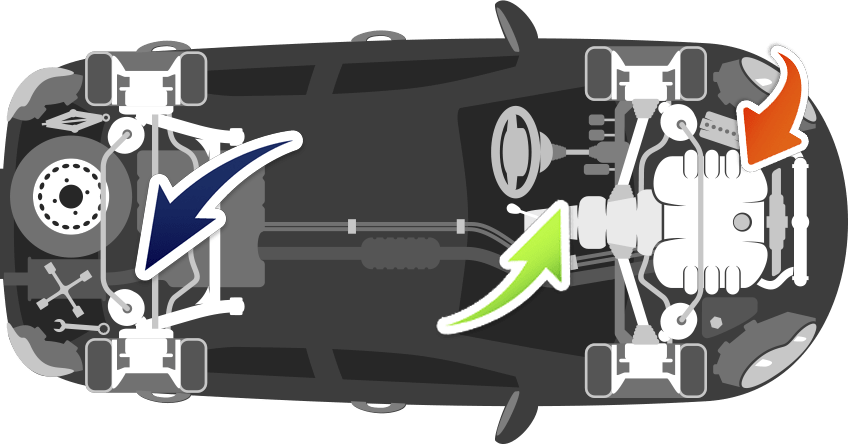
Du skal kunne udpege følgende udstyr:
Du skal kunne udpege følgende udstyr:
Kontakt til ratlås, tænding, elektrisk starter, rudevisker og -vasker, horn, tilladte og påbudte lygter, varme- og ventilationsanlæg, el-bagrude samt betjeningsanordning for spejlindstilling.
Pedal til kobling, speeder og bremse.
Gearstang, herunder gearenes placering, betjeningsanordningen for parkeringsbremsen og rat.
Sikkerhedsselens fastgørelsespunkter og lås.
Betjeningsanordning til åbning af motorhjelm og tankdæksel.
Påfyldningsdæksel for motorolie, kølervæske, sprinklervæske og eventuelt olie til servostyring.
Videoen er med engelske undertekster.
